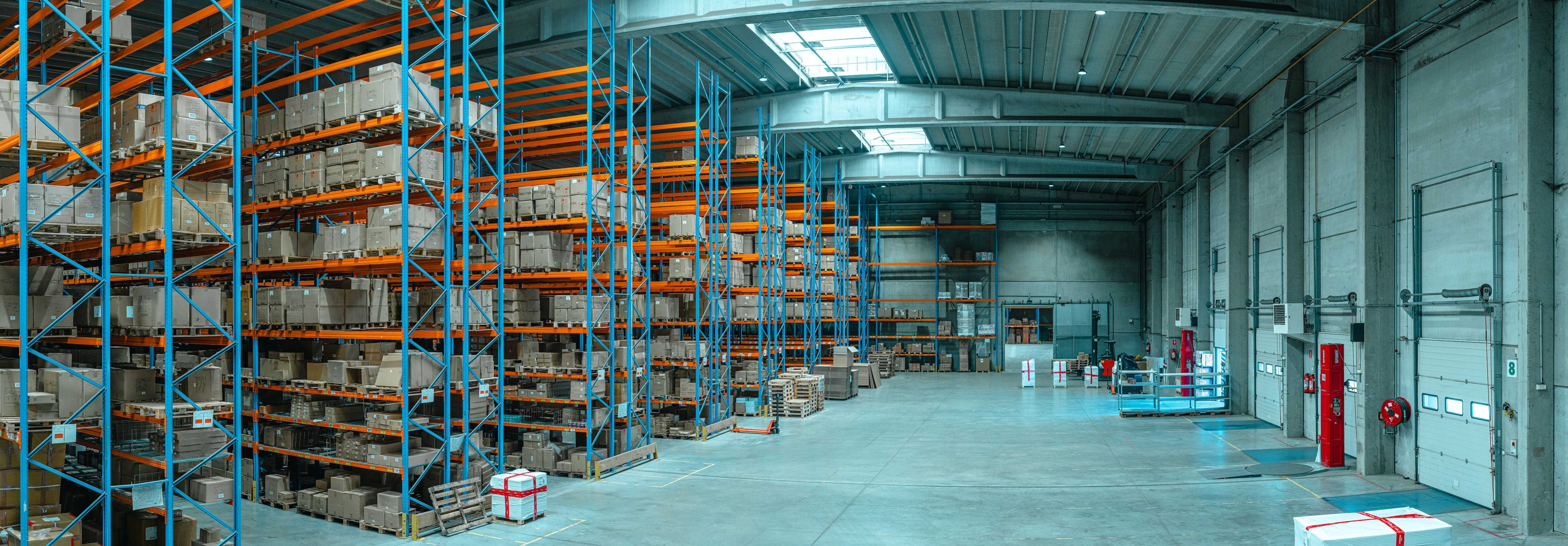Troubled Freight Management
Mastering Troubled Freight Management: A Comprehensive Guide
As businesses navigate the complexities of global supply chains, freight management has become a cornerstone of operational strategy. Here we’ll explain what freight management entails, its significance across various industries, its unique challenges in the post-COVID landscape, and effective strategies for managing troubled freight.
Understanding Freight Management
What is Freight Management?
Freight Management is the strategic process of organizing, coordinating, and overseeing the movement of goods from one point to another. It encompasses a wide range of activities, including carrier selection, rate negotiation, freight tracking, and the resolution of shipping issues. Effective freight management ensures that goods are delivered efficiently, cost-effectively, and on time.
Who Needs Freight Management?
Robust freight management can benefit virtually every business involved in the production, sale, or distribution of goods. This includes manufacturers, e-commerce companies, wholesalers, and retailers. Whether you're shipping globally or domestically, managing your freight effectively is crucial to maintaining a competitive edge and customer satisfaction.
When is Freight Considered “Troubled?”
In the intricate dance of supply chain logistics, not all freight moves smoothly from point A to point B. Various red flags appear when your freight appears to be entering troubled waters. Understanding these signs is crucial for timely intervention and mitigation. So, how do you know when your freight is considered "troubled"? Here are the six signs of troubled freight.
- Delayed Shipments. One of the most apparent indicators of troubled freight is delays in shipments. When goods fail to arrive or depart as scheduled, it's a clear signal that something is amiss in your logistics chain.
- Frequent Damage or Loss. Regular instances of damaged or lost goods can also indicate deeper issues within your freight management process. These could be due to inadequate packaging, handling issues, or problems with the chosen carriers.
- Escalating Costs. If you notice a sudden or gradual increase in shipping costs without a corresponding rise in volume or distance, your freight might be experiencing inefficiencies or unnecessary complexities that need to be addressed.
- Carrier Capacity Issues. Trouble can also arise from overreliance on a single carrier or failure to adapt to market capacity fluctuations, leading to missed shipments or last-minute scrambles to find alternative transport options.
- Compliance Challenges. Encountering frequent compliance issues from regulatory bodies or internal standards indicates a misalignment in your freight operations that could lead to troubled freight.
- Poor Visibility. If you often are unaware of where your freight is, its status, or expected delivery times, it's a sign that your freight management lacks the necessary visibility and control, potentially leading to trouble down the line.
Troubled Freight is Stuck Freight
Regardless of the cause, troubled freight usually gets stuck. Getting it unstuck invariably involves additional stakeholders, time, and money.
For example, imagine that a PO for ten red dresses comes in, but only five are red and the rest are blue. The retailer in question sells blue dresses too, but resolving the issue requires the buyer’s involvement. The freight gets moved to a troubled freight area. Calls or emails go out to the buyer seeking resolution. Ultimately the decision is made to return the blue dresses. This in turn triggers the return to vendor process, and the vendor has to get involved.
Retail examples like this are legion. They are disruptive, and costly to resolve.
Proactive Measures for Troubled Freight
Recognizing these signs early helps you take proactive measures, such as diversifying carrier options, enhancing communication with logistics partners, investing in technology for better tracking and visibility, and refining packaging and handling practices. Addressing your troubled freight promptly can prevent issues from escalating, safeguarding your supply chain's efficiency and reliability.
Post-COVID Freight Management Challenges
The COVID-19 pandemic has reshaped the global supply chain landscape, introducing a host of new challenges for freight management:
- Increased Volatility. Market uncertainties have led to unpredictable freight rates and capacity constraints.
- Supply Chain Disruptions. Lockdowns and labor shortages have caused significant disruptions in supply chains, leading to delayed shipments and increased lead times.
- Heightened Customer Expectations. The e-commerce boom has elevated customer expectations for rapid delivery times, further straining freight operations.
Addressing Troubled Freight (Regardless of Cause)
In the face of these challenges, businesses must adopt proactive and flexible strategies to manage troubled freight effectively:
- Diversify Carrier Networks. Don't put all your eggs in one basket. Working with various carriers can mitigate the risks you face from capacity shortages and rate fluctuations.
- Leverage Technology. Invest in a Transportation Management System (TMS) to gain visibility into your supply chain, optimize routes, and track shipments in real-time.
- Enhance Communication. Establish clear lines of communication with your supply chain partners. Regular updates can help anticipate and address potential disruptions promptly.
Ownership of the Process
Typically, logistics managers, supply chain directors, or operations managers are responsible for freight management. These roles are pivotal in planning, executing, and monitoring freight operations, ensuring the company's logistical needs are met efficiently.
The Workload of Managing Freight by Business Size
The effort required to manage freight varies significantly with the size and scope of the business:
Small Businesses. May handle freight management in-house with a small team or individual. While the volume of shipments may be lower, the lack of resources can make freight management exceptionally challenging.
Medium-Sized Businesses. Often have dedicated logistics teams but may still struggle with the complexities of scaling their operations. They might explore third-party logistics (3PL) partnerships to outsource some freight management tasks.
Large Enterprises. Typically have extensive logistics operations with dedicated departments or external 3PL partnerships to handle their complex freight management needs. The challenge here is coordinating large-scale operations and maintaining flexibility in the face of disruptions.
The Manual Element of Freight Management?
Managing freight is made even more labyrinthine when it relies chiefly on manual processes, which today remains the most frequent approach. Logistics teams make numerous phone calls to carriers, generate endless email chains for quotes and bookings, and constantly shuffle the paperwork behind shipment tracking and issue resolution. This hands-on workstyle demands significant time and effort from logistics teams, who must meticulously organize, update, and communicate every detail to ensure shipments move smoothly from origin to destination.
In an era where efficiency and speed are paramount, manual freight management stands out as a labor-intensive, error-prone process that can slow operations and increase the likelihood of costly mistakes. This underscores the industry's need for automation and digital solutions.
Navigating the Future of Freight Management
As businesses grapple with the evolving global logistics landscape, the importance of effective Troubled Freight Management cannot be overstated. By understanding the nuances of freight management, embracing technology, and adopting flexible strategies, companies can navigate post-COVID challenges, enhance operational efficiency, and ultimately drive customer satisfaction and business growth.
Rivet Automates Troubled Freight Management
Rivet, Traverse Systems’ business process automation solution, combines software and professional services to automate troubled freight management. It incorporates your existing documents, data, and, where desired, data repositories and applications. Using a shared platform, it connects everyone involved in tracking freight movement, both inside and outside your organization. It allows companies of all sizes to centrally manage, track, and resolve freight management issues.
Rivet can automatically share freight and shipping data, removing the need for costly and error-prone duplicative data entry. It automates the tracking of deadlines and other action mandates and follow-up. It automatically alerts appropriate personnel of erroneous, incomplete, or late tasks. And its customizable dashboards give you visibility into the status of processes, risk exposure, and the need for action.
Rivet can be particularly helpful in troubled freight management cases, affecting both your bottom line and the customer experience. In these and other cases, Rivet helps you to easily:
- Raise the visibility of freight management status and issues to every interested party at the same time
- Accurately track accountability with a thorough audit trail that includes documents, email chains, photographs, etc.
- Generate automatic alerts and reminders of overdue actions or responses
With Rivet, you gain complete visibility over the troubled freight management process, including who is working on resolving a particular issue, what stage of the process it’s in, and how long resolution has been happening. Eliminate the bottlenecks associated with manual data input and the time lost through lack of visibility into troubled freight management issues.



